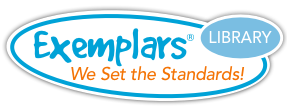Grade 3 - Place Value Unit
The Place Value Unit involves understanding and representing the relative position, magnitude and relationships within the numeration system in order to answer questions such as:
- How can you use the additive property of place value (expanded notation) to decompose the number 54,321? (50,000 + 4,000 + 300 + 20 + 1)
- How can you use the base ten property of place value to explain the relationship between each of the digits in the number 55,555? (Each number is worth 10 times the number to its right and one-tenth the number to its left.)
- How can you use the multiplicative property of place value to describe the meaning of each digit in the number 54,321? (Since the 4 is in the thousands place, multiplying the 4 times 1,000 gives the value of the 4 in the number.)
- What other ways can you use ten thousands, thousands, hundreds, tens, and ones to represent a number without changing its value? (Methods might include using objects, pictorial models, and numbers, including non-standard partitioning of the number in a variety of ways.)
Math Concepts and Skills:
The student represents and compares whole numbers and understands place value relationships.
The student:
- decomposes numbers up to 100,000 using sums of ten thousands, thousands, hundreds, tens, and ones.
- describes the mathematical relationships between digits in the base-10 place value system through the hundred thousands place.
- shows a number on a number line as being between two consecutive multiples of 10; 100; 1,000; or 10,000 and describes the relative size of numbers in order to use rounding as a tool for estimating with whole numbers.
- compares and orders whole numbers up to 100,000 and represents the comparisons using the symbols >, <, or =.
Summative Assessment Task
Students use inequality symbols to compare the home town populations of three teams and round population numbers to the nearest hundreds place to determine which team has the greatest combined rounded population.
Instructional Tasks/Formative Assessments
Students estimate to the nearest hundred to determine if Jose has sold all of his bananas.
Students round the number of book pages read to the nearest hundred.
Rounding to the nearest 10, students determine how many insects are let go from glass jars.
Students determine the number of tables that Mrs. Gomez will need for a party to celebrate the hard work of her class.
